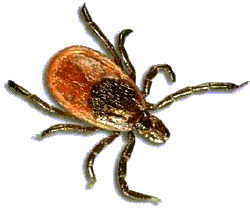|
News Flash! Hell Freezes Over! CDC "Announces" Lyme
Disease Is Underreported!
We've known that for years,
of course, but it's nice that the CDC has finally noticed. Well, admitted it.
Here's an article that discusses the CDC's "discovery" and
summarizes the issues facing us. Prevalence
of Lyme Disease in the U.S. is 10-Times Higher Than Previously Reported,
by Dr. Mercola.
Now, if only the CDC would
stop promoting the ISDA's insurance industry funded "treatment
guidelines", more people might actually start having a chance of getting
better.
Of course, for every
admission gained, there remains the blind eye. Read TICKED: The Battle
Over Lyme Disease in the South, a long e-article by Discover InDepth (Discover Magazine).
Should we trust the CDC?
The Lyme Disease Association doesn't think so (and, frankly, neither do I,
given their track record on so many devastating illnesses). Read part of
Phyllis Mervine's testimony at the CDC's June 11,
2013 meeting: Should
Patients Trust the CDC?
The Lyme disease
community--physicians, victims (er, patients) and
their families--have repeatedly sought redress from the CDC on this and
related "research" points. This Lyme
Disease Community Blows the Whistle on Corruption Within the CDC article
by Jessica Bernstein pretty much says what I've believed all along: the CDC's
'announcement' probably coincides with the upcoming release of the new Lyme
vaccine. Hopefully, this new one by Sanofi Pastuer
won't give people Lyme disease like the last one did...
Yes, too many things have still not changed...
Scarily enough, there are
still health care providers out there who do not believe Lyme Disease is a
real disease. Like those with CFS, FM and MCS, people with Lyme are told they
are "just depressed" or "trying to get attention" or that
it is "all in your head" (to be fair, since the spirochetes or
their toxins can cross the blood brain barrier, it is in your head, though
this is not quite what these doctors were implying...). If this typifies the
response you got from your doctor, it's time to find a new one.
Of
course, most doctors rely on what the CDC and their state and county
departments of health tell them. Anyone who has watched the CDC in action
over the past several years (okay, decades)
know that whatever it is they are doing, it has little to do with disease
control and prevention, especially when it comes to organisms as changeable
and adaptive as parasites.
The CDC--and insurance
companies--take their cue on what Lyme disease is
and how to treat it from the ISDA, a group of self-serving physicians who
selectively review only that literature which agrees with their premise: that
LD is easily and quickly treated, and if you're still sick, then you're
clearly mentally ill. Physician Joseph Schaller discusses the situation in a
letter to the editor of The Scientist in February 2007, in response to the
dismissive article, State
official subpoenas infectious disease group.
From
January 1 through May 10, 2003, there were 1727 cases of Lyme disease
reported to the CDC. It is estimated that only one out of every 10 cases of
Lyme disease is reported to the CDC. --Lyme
Disease Foundation
"...Lyme
disease has become a permanent part of America's public health landscape. It
provides a warning and example of how an apparent state or
regionally-centered problem can grow to become a national problem. Instead of
implementing a proactive, nationwide animal-borne disease management
strategy, the public health response to Lyme disease was left to evolve as
the disease spread across country." (From Animal-Borne
Epidemics Out Of Control: Threatening the Nation's Health, published by Trust for America's Health)
|
